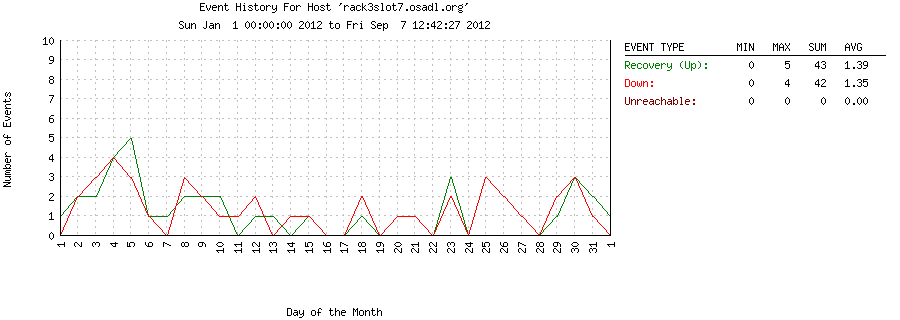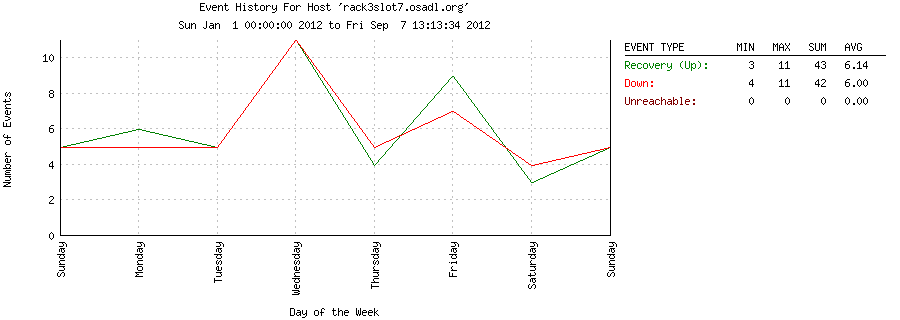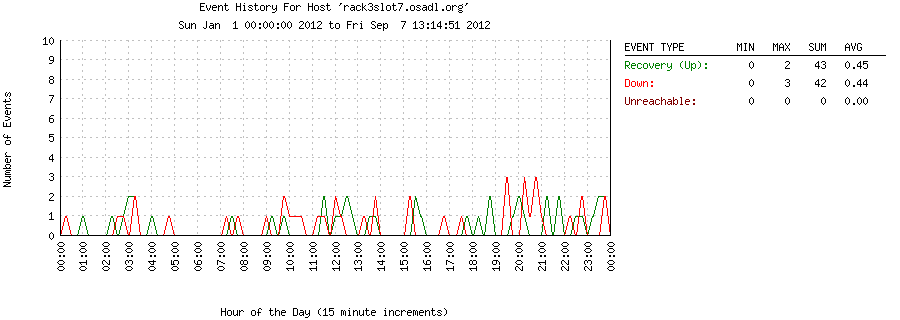Dates and Events: |
OSADL Articles:
2023-11-12 12:00
Open Source License Obligations Checklists even better nowImport the checklists to other tools, create context diffs and merged lists
2022-07-11 12:00
Call for participation in phase #4 of Open Source OPC UA open62541 support projectLetter of Intent fulfills wish list from recent survey
2022-01-13 12:00
Phase #3 of OSADL project on OPC UA PubSub over TSN successfully completedAnother important milestone on the way to interoperable Open Source real-time Ethernet has been reached
2021-02-09 12:00
Open Source OPC UA PubSub over TSN project phase #3 launchedLetter of Intent with call for participation is now available |
"Latest Stable" main page - Criteria - Examples
Examples
Stability regression - Latency regressions
Stability regression
The following 1-year recordings of uptime and kernel version have been obtained on a VIA EPIA-V board that is equipped with a CentaurHauls VIA Samuel 2 CPU running at 533 MHz.
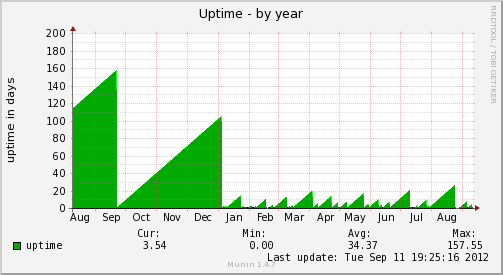
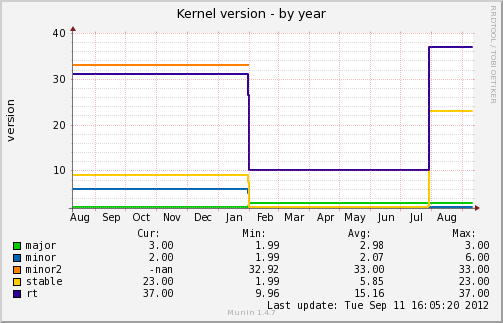
Further analysis
There is little doubt that this instability with an average uptime of about 10 days was introduced when upgrading from version 2.6.33.9-rt31 to 3.2.2-rt10. Apparently, the upgrade to version 3.2.23-rt37 did not help.
In order to relate the crashes to certain external conditions, we regularly carry out host alert histogram analyses with respect to day of the month, day of the week and hour of the day:
Unfortunately, the histogram analyses do not provide any hint towards the origin of the crashes in this particular case, since no time clusters of the crash times can be established.
Conclusion
An instability of unknown origin was introduced when upgrading from the 2.6.x to the 3.x kernel series. Since the system does not produce any output when crashed – even not when forced using a SysRq command – specific hardware instrumentation may be required to elucidate the origin of this instability.



